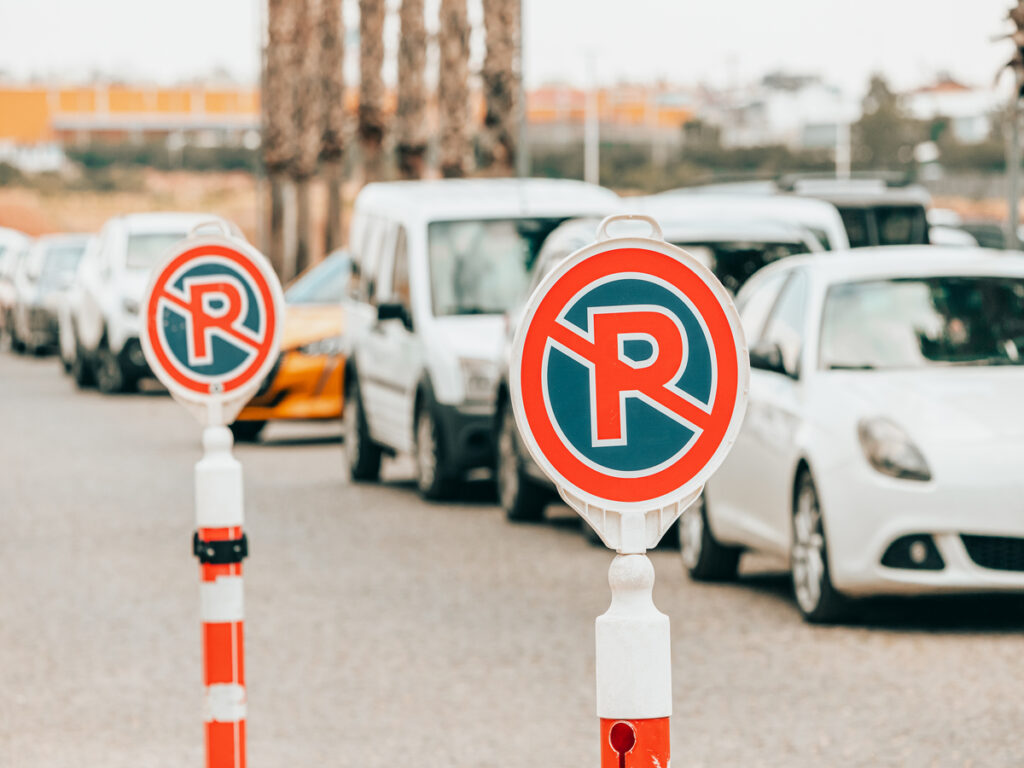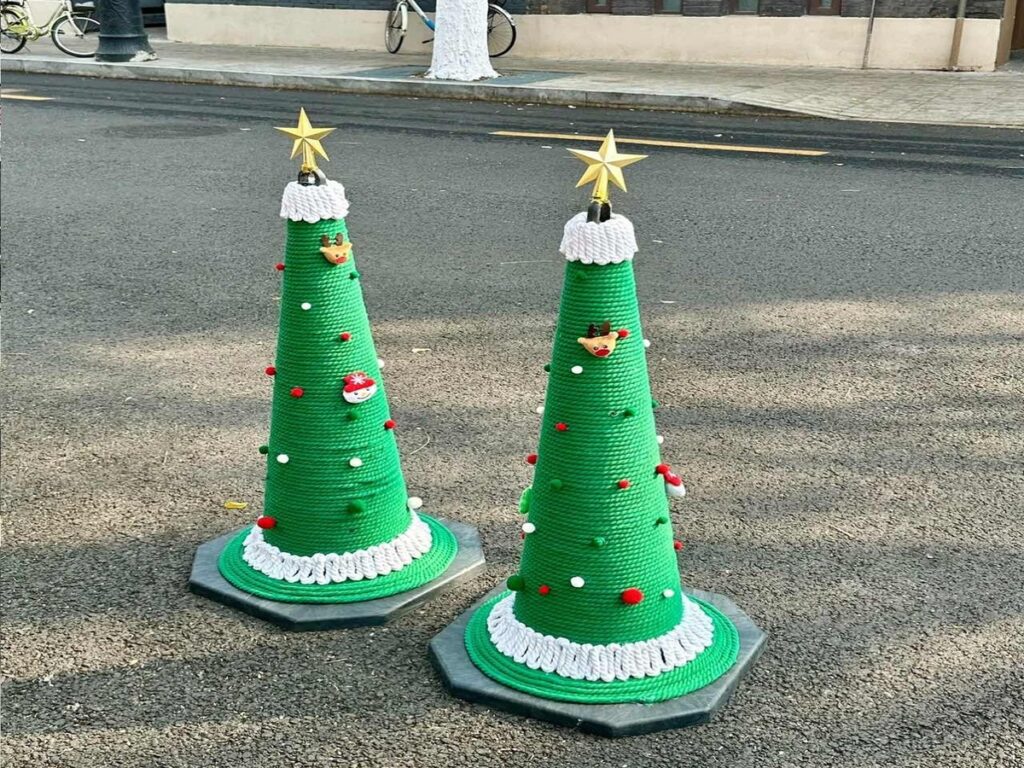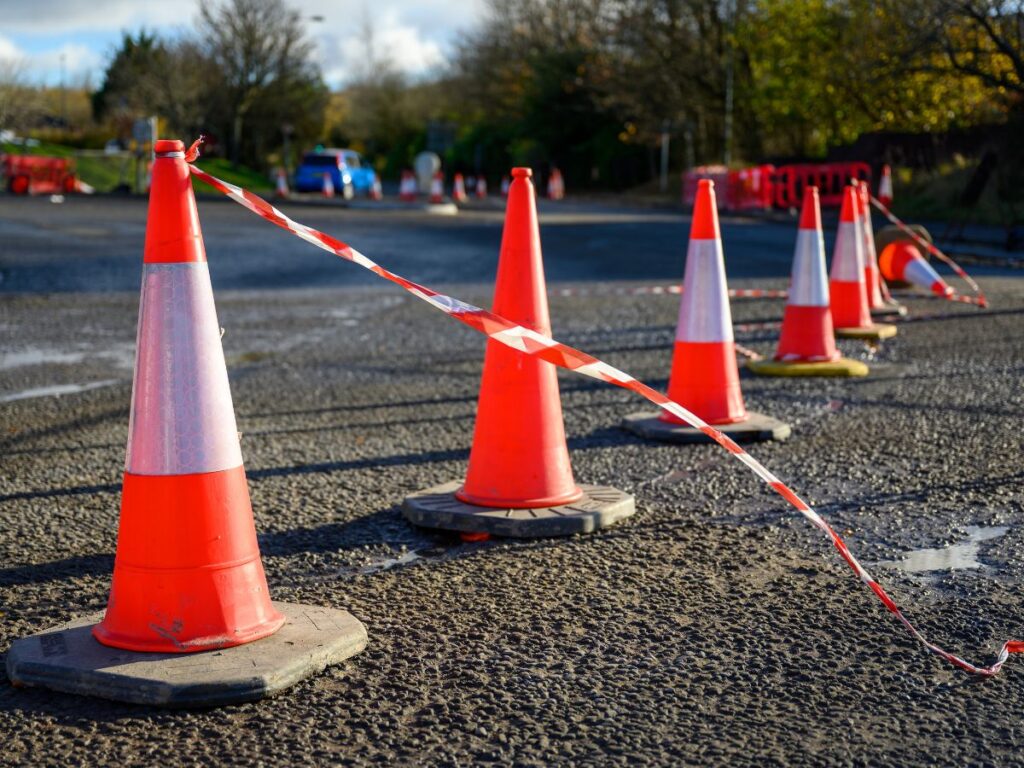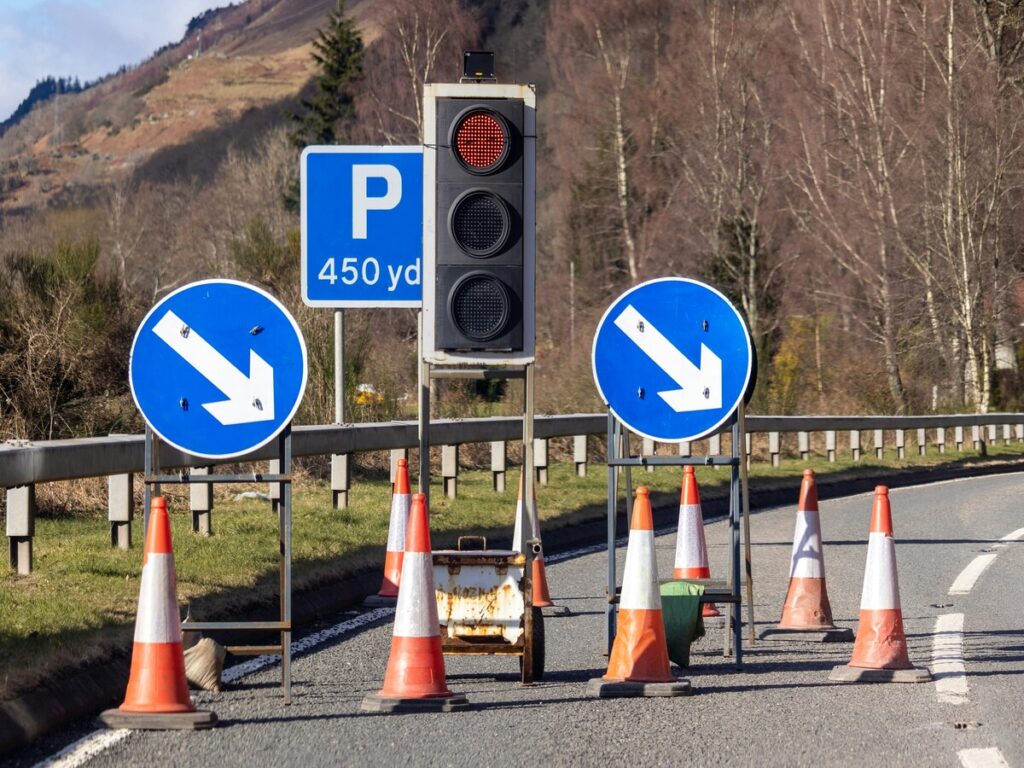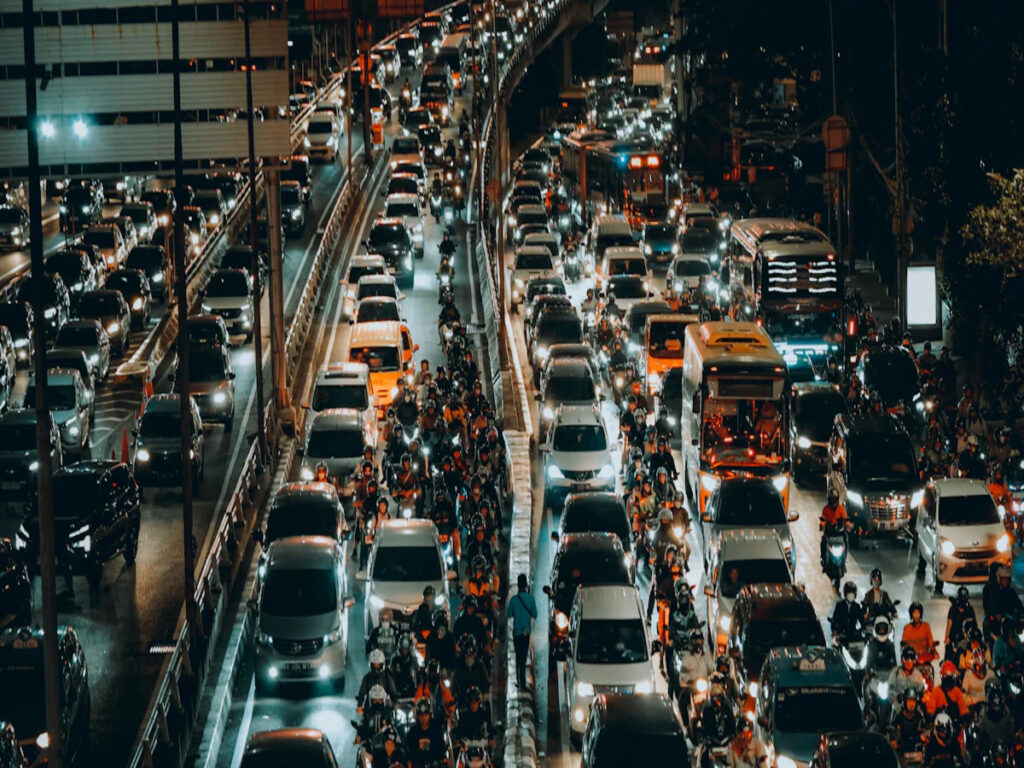
Congestão de tráfego é uma luta diária para muitos americanos. Algumas cidades, no entanto, Leve para outro nível. Em lugares como Chicago, onde os motoristas perdem uma média de 155 horas por ano no trânsito, ou Boston, onde 134 Horas desaparecem no impasse, A frustração é real. Outras cidades como Miami, Los Angeles, E Nova York também está alta para atrasos, custando aos motoristas tempo e dinheiro. Em todo o país, Congestão acumula $74 bilhões anualmente em perda de produtividade.
Você pode se perguntar, how can something as simple as highway cones make a difference? These bright orange tools play a huge role in improving traffic flow. They help manage traffic issues by guiding vehicles, marking detours, and keeping construction zones safe. Sem eles, navigating congested roads would be even more chaotic.
Principal 10 Cidades com o pior tráfego
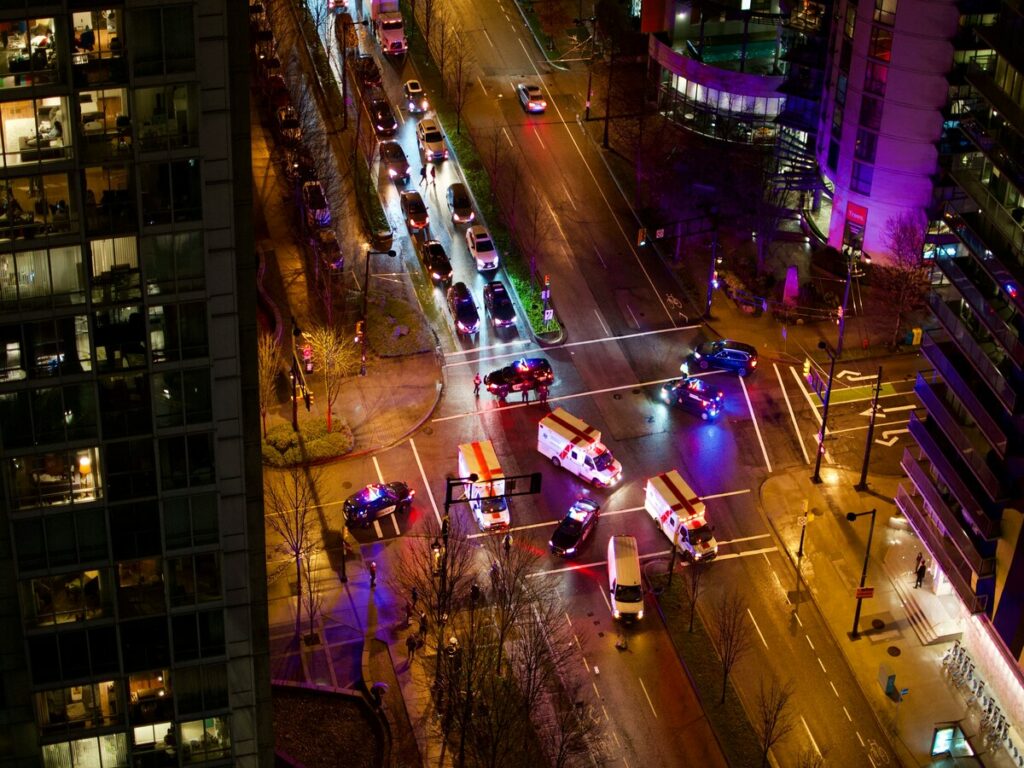
#1: Chicago, Illinois
Hours lost annually and financial impact
If you’ve ever driven in Chicago, você sabe como isso pode ser frustrante. It’s not just you—Chicago ranks as the number one city for traffic delays in the U.S. Drivers here lose an average of 155 extra hours per year sitting in congestion. That’s nearly a week of your life wasted in traffic! Em cima disso, the financial impact is staggering. Each driver loses about $2,618 annually due to traffic delays. These costs include lost productivity and increased fuel expenses, making Chicago one of the most congested cities in the country.
Challenges with major highways and freight traffic
Chicago’s location as a major transportation hub adds to its traffic woes. The city’s highways, como o Kennedy Expressway, are often clogged with a high volume of vehicles, including freight trucks. Long traffic jams and low driving speeds are common, especialmente durante a hora do rush. Distracted driving also contributes to heavy traffic and accidents, further slowing things down. For commuters, navigating Chicago’s urban centers can feel like a never-ending battle.
#2: Boston, Massachusetts
High commuter volume and narrow streets
Boston’s historical charm comes with a price—its infrastructure wasn’t built for today’s high volume of vehicles. The city’s narrow streets and complex road systems create bottlenecks that make your daily commute time feel like an eternity. With one of the longest commute times in the U.S., Boston drivers face heavy traffic and significant delays. The city’s high population density and restrictions on road expansion only make things worse.
Weather-related traffic issues
Boston’s weather doesn’t do you any favors either. Snowstorms, estradas geladas, and heavy rain can turn an already bad situation into a nightmare. These conditions often lead to accidents and traffic jams, adding extra hours per year to your commute. Para muitos, navigating Boston’s roads during winter feels like a test of patience and skill.
#3: Nova York, Nova Iorque
Congestion in Manhattan and boroughs
New York City is famous for its hustle and bustle, but that also means constant congestion. Manhattan, em particular, is a hotspot for traffic jams. Whether you’re driving through Times Square or crossing into the boroughs, you’re likely to encounter delays. The city’s urban layout and high population density make it one of the most congested cities in the world.
Public transportation delays and population density
Even if you rely on public transportation, you’re not immune to delays. Subway breakdowns and overcrowded buses can add to your frustration. With millions of people commuting daily, the city’s infrastructure struggles to keep up. For drivers and public transit users alike, navigating New York often feels like a race against time.
#4: Filadélfia, Pensilvânia
Traffic bottlenecks and aging infrastructure
Philadelphia’s traffic congestion can feel like a constant headache. The city’s aging infrastructure struggles to handle the growing number of vehicles on the road. You’ve probably noticed how traffic bottlenecks form in key areas. This happens for several reasons:
- More people are driving as jobs rebound post-COVID-19.
- Public transportation ridership remains low, with many opting for cars instead.
- Double parking clogs narrow streets, leaving little room for smooth traffic flow.
Speeding and reckless driving also make things worse. These behaviors accounted for 42% of traffic fatalities in 2020, de cima de 40% in previous years. With limited alternatives like biking or walking, many Philadelphians rely on cars, adding to the congestion.
Economic impact of congestion
The economic toll of traffic jams in Philadelphia is significant. You lose time and money sitting in your car, whether it’s during your daily commute or while running errands. Businesses also feel the pinch. Delivery delays and increased fuel costs hurt their bottom line. For a city with so much history and culture, the heavy traffic can make getting around a frustrating experience.
#5: Miami, Flórida
Seasonal tourism spikes and flooding challenges
Miami’s sunny beaches and vibrant nightlife attract millions of tourists each year. While this is great for the economy, it’s not so great for traffic. Seasonal tourism brings a surge of vehicles to the city’s roads. Tourists often drive unpredictably, which complicates traffic conditions and increases the risk of accidents. Popular areas with major attractions see the worst of it, with congestion slowing travel times to a crawl.
Flooding is another challenge. Miami’s low-lying geography means that even a heavy rainstorm can leave roads underwater. This disrupts traffic flow and creates dangerous driving conditions. If you’ve ever tried to navigate Miami during a storm, you know how chaotic it can get.
Road infrastructure limitations
Miami’s road infrastructure wasn’t designed to handle such a high volume of vehicles. Limited public transit options force many residents to rely on cars, adding to the congestion. The city’s rapid growth has outpaced its ability to expand and improve its roadways. Para motoristas, this means more time stuck in traffic and less time enjoying everything Miami has to offer.
#6: Los Angeles, Califórnia
Sprawling layout and car dependency
Los Angeles is infamous for its sprawling urban layout and car-dependent culture. Public transportation options are limited, so most residents rely on their cars to get around. This creates a perfect storm for congestion. The city’s vast network of freeways often turns into a parking lot during rush hour.
Hours lost annually in traffic
If you live in LA, you’re no stranger to traffic jams. The average resident loses over 100 hours each year sitting in traffic. That’s more than four days of your life wasted on the road! This makes LA one of the worst cities globally for commuting. The financial impact is just as bad. Each driver spends over $2,400 annually on lost productivity and fuel. For a city known for its glamour, the daily grind of traffic can feel anything but glamorous.
#7: São Francisco, Califórnia
Bridge bottlenecks and commuter influx
San Francisco’s iconic bridges, como o Golden Gate e Bay Bridge, are more than just landmarks—they’re also major traffic chokepoints. If you’ve ever tried crossing one during rush hour, you know how frustrating it can get. These bridges connect the city to surrounding areas, bringing in a constant influx of commuters. With so many vehicles funneling through limited lanes, congestion builds up quickly.
The city’s geography doesn’t help either. San Francisco is surrounded by water on three sides, leaving few options for expanding roadways. This means you’re often stuck in heavy traffic, especially during peak commuting hours. Para muitos, the daily grind of crossing these bridges feels like a test of patience.
Tech industry growth and housing challenges
San Francisco’s booming tech industry has drawn thousands of workers to the area. While this growth has boosted the economy, it’s also added to the city’s traffic congestion. More people mean more cars on the road, and the city’s infrastructure struggles to keep up.
Housing challenges make things worse. Many workers can’t afford to live in the city, so they commute from neighboring areas. This increases the number of vehicles on the road and puts extra pressure on already crowded highways. Para você, this means longer travel times and more time spent sitting in traffic.
#8: Washington, D.C.
Government-related traffic patterns
Washington, D.C., isn’t just the nation’s capital—it’s also a hotspot for traffic congestion. The city’s high population density and inadequate road infrastructure create a perfect storm for delays. Government-related activities add another layer of complexity. Key areas around government buildings and tourist attractions often experience severe congestion, especialmente durante os horários de pico.
If you’ve ever driven near Capitol Hill ou o National Mall, you know how chaotic it can get. The reliance on cars and limited public transportation options only make things worse. Para muitos, navigating D.C.’s urban streets feels like a constant battle against the clock.
Infrastructure and commuter challenges
D.C.’s aging infrastructure struggles to handle the growing number of commuters. Roads and bridges often require maintenance, leading to lane closures and detours. These disruptions add to the congestion and make your daily commute even more challenging.
Public transportation isn’t always a reliable alternative. Delays and overcrowding on the Metro leave many residents with no choice but to drive. This increases travel times and adds to the city’s already heavy traffic.
#9: Atlanta, Georgia
Limited public transportation options
Atlanta’s traffic congestion stems from its lack of public transportation options. Apenas sobre 3.5 percent of commuters use public transit, while a staggering 77 percent drive alone. This heavy reliance on personal vehicles clogs the city’s roads and makes your commute longer.
If you’ve ever tried navigating Atlanta during rush hour, você sabe como isso pode ser frustrante. The city’s sprawling layout and limited transit options leave few alternatives for getting around. Para muitos, driving is the only viable choice, which only adds to the congestion.
Congestion on major highways like I-285
Atlanta’s highways, especialmente I-285, are notorious for traffic jams. This major loop around the city sees a high volume of vehicles daily, leading to frequent bottlenecks. Accidents and construction projects only make things worse, turning your commute into a stressful ordeal.
The city’s rapid growth has outpaced its infrastructure, leaving roads overcrowded and under-maintained. Para você, this means more time stuck in traffic and less time enjoying what Atlanta has to offer.
#10: Seattle, Washington
Tech industry growth and limited road capacity
Seattle’s booming tech industry has transformed the city into a hub of innovation. Empresas gostam Amazon e Microsoft have drawn thousands of workers to the area. While this growth has boosted the economy, it’s also made your daily drive more frustrating. More people mean more cars, and the city’s roads just can’t keep up.
Seattle’s urban layout adds to the challenge. The city’s geography, surrounded by water and hills, limits the ability to expand roadways. You’ve probably noticed how narrow streets and limited highway capacity create bottlenecks during peak hours. The average commute time here feels longer than it should, especially when you’re stuck behind a sea of brake lights.
Frequent construction and infrastructure issues
If you’ve driven through Seattle recently, you’ve likely encountered construction zones. The city constantly works to repair aging infrastructure and accommodate its growing population. While these projects aim to improve things in the long run, they often make traffic congestion worse in the short term. Desvios, fechamento de pista, and reduced speeds can turn your commute into a test of patience.
Seattle’s weather doesn’t help either. Rainy conditions can slow traffic and lead to accidents, further complicating your drive. Add in the occasional bridge closure or tunnel maintenance, and it’s no wonder Seattle made the list of the top 10 cities with the worst traffic.
Apesar desses desafios, the city continues to invest in solutions like public transit and bike lanes. While these efforts may not solve everything overnight, they’re steps toward easing the gridlock you face every day.
Causes of Traffic Congestion
Vehicular Events
Accidents and breakdowns
Crashes are one of the most common reasons you find yourself stuck in traffic. They often lead to lane closures, causing significant traffic delays. Even minor fender benders can create a ripple effect, slowing down vehicles for miles. Breakdowns are another major culprit. Did you know that breakdowns affect 150 milhões de pessoas anualmente? That’s a staggering number! These incidents lead to 120 million hours lost every year, leaving you frustrated and late for work. Debris on the road, like fallen branches or tire remnants, can also block lanes and add to the congestion.
Here’s a quick breakdown of common vehicular events:
| Vehicular Event | Descrição |
|---|---|
| Acidentes | Often cause significant delays and traffic jams. |
| Avarias | Affect 150 million people annually, levando a 120 million hours lost. |
| Debris | Can obstruct lanes and lead to congestion. |
Construction and road maintenance
You’ve probably seen those orange cones and flashing signs on your commute. While necessary, construction zones can slow traffic to a crawl. Lane closures and detours force vehicles into tighter spaces, creating bottlenecks. Poorly timed maintenance during peak hours only worsens the situation. Although these projects aim to improve roads, they often feel like a test of your patience in the short term.
Human Factors
Distracted driving and human error
Distracted driving is a huge problem. When drivers take their eyes off the road for just five seconds to check their phones, it’s enough time to cause serious crashes. These incidents not only put lives at risk but also lead to massive traffic delays. Even without crashes, sudden braking caused by distracted drivers can create phantom traffic jams. This ripple effect slows everyone down, making your commute longer than it needs to be.
Rush hour and commuter patterns
Rush hour is the bane of every driver’s existence. The increase in rush hour driving time happens because so many people hit the road at the same time. This overloads highways and city streets, levando ao congestionamento. Commuter patterns, like everyone leaving work at 5 PM, create predictable but unavoidable traffic jams. If you’ve ever wondered why your drive takes twice as long during rush hour, now you know.
Environmental Issues
Weather conditions like snow, chuva, and flooding
Mother Nature doesn’t always cooperate with your commute. Heavy rain reduces visibility and makes roads slippery, increasing the risk of crashes. Snow and ice can turn highways into skating rinks, forcing you to drive slower. Flooding, especialmente em áreas baixas, can submerge lanes and bring traffic to a standstill.
Here’s how different weather conditions impact traffic flow:
| Environmental Condition | Impacto no fluxo de tráfego |
|---|---|
| Chuva forte | Reduces visibility and road traction. |
| Neve | Can lead to submerged lanes and reduced speed. |
| Névoa | Decreases visibility, increasing accident risk. |
| Severe Weather | Causes debris on roads and potential accidents. |
Natural disasters impacting roadways
Natural disasters like hurricanes, earthquakes, and wildfires can wreak havoc on roadways. These events often cause infrastructure failures, leaving roads impassable. Por exemplo, fallen trees or collapsed bridges can block major routes, forcing you to take long detours. Enquanto raro, these disasters highlight how vulnerable our roads are to nature’s fury.
Infrastructure Challenges
Aging roads and bridges
You’ve probably noticed potholes, rachaduras, or uneven surfaces on roads during your daily drive. These are signs of aging infrastructure, and they’re a big reason why traffic congestion keeps getting worse. O Sociedade Americana de Engenheiros Civis gave the U.S. a C-minus for infrastructure. That’s not exactly a grade to brag about. Many roads and bridges haven’t been properly maintained, which leads to more delays and even dangerous conditions.
When roads aren’t in good shape, crashes become more common. Damaged surfaces can cause accidents, especially during rush hour when everyone’s in a hurry. Bridges are another concern. Some are decades old and can’t handle the weight of today’s traffic. Repairs and closures often create bottlenecks, leaving you stuck in long lines of cars.
Here’s what contributes to the problem:
- Poorly planned road systems that don’t meet modern needs.
- Insufficient lanes to handle the growing number of vehicles.
- Outdated traffic signals that fail to manage rush hour effectively.
These issues make your commute longer and more frustrating.
Insufficient public transportation systems
If you’ve ever wished for a better alternative to driving, you’re not alone. Many cities lack reliable public transportation, forcing most people to rely on cars. This adds to congestion, especialmente durante a hora do rush. Without enough buses, trens, or subways, the roads get packed with vehicles, and your travel time doubles.
Population growth makes this even worse. As more people move to urban areas, the demand for public transit increases. Infelizmente, many systems haven’t expanded to keep up. Limited routes, atrasos, and overcrowding leave you with few options.
Investing in better public transportation could ease congestion and reduce crashes. Imagine fewer cars on the road and a smoother commute. Until then, you’re stuck navigating the chaos of aging roads and packed highways.
How Highway Cones Help Manage Traffic Congestion
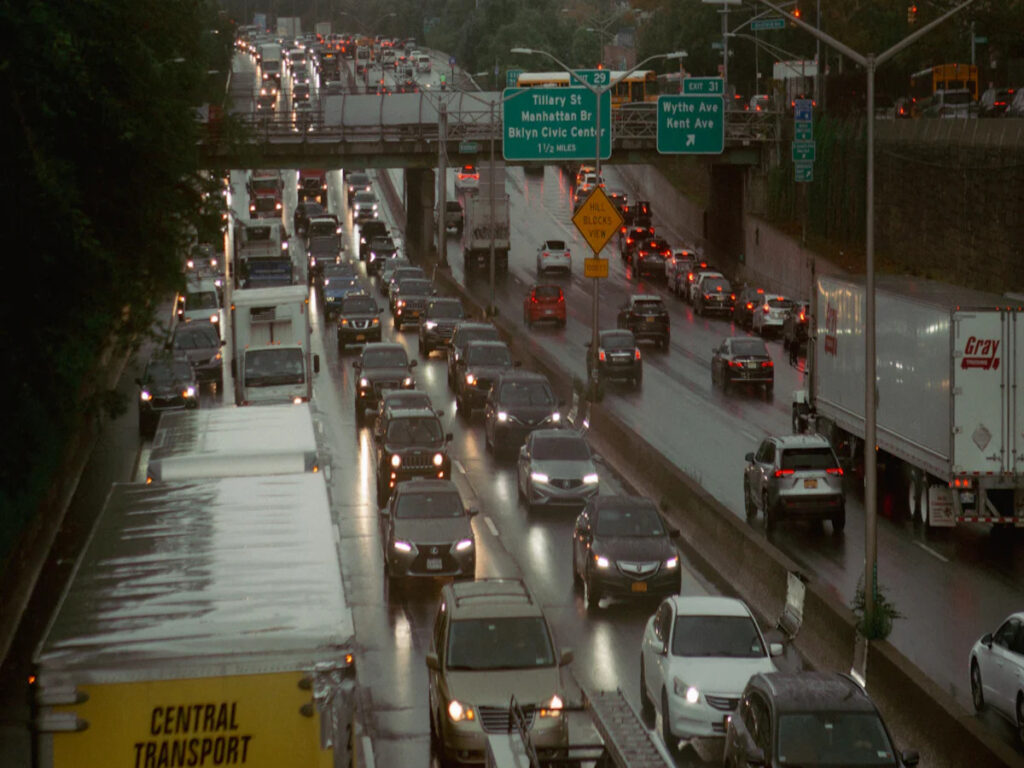
Traffic Control with Highway Cones
Redirecting vehicles during accidents or emergencies
When accidents or emergencies occur, highway cones become your unsung heroes. They help redirect vehicles, ensuring traffic keeps moving smoothly. Police and traffic control teams use these highway cones to create temporary lanes or detours. This minimizes traffic delays and prevents congestion from spiraling out of control. Cones also mark hazards, like debris or closed lanes, so you can navigate safely. Sem eles, managing traffic during emergencies would be chaotic and dangerous.
Sinais OPT recognize the importance of these unsung heroes in maintaining road safety. That’s why OPTsigns offer high-quality, durável Cones de trânsito designed for optimal visibility and long-lasting use. Whether you’re dealing with construction zones, sites de acidentes, ou eventos especiais, Sinais OPT America Black Base Tráfego are built to withstand tough conditions and ensure that traffic flows safely and efficiently.
Marking temporary lanes or detours
Have you ever driven through a detour and wondered how it all comes together? Highway cones play a big role here. Their bright colors and reflective strips make them easy to spot, Mesmo com pouca luz. They guide you through temporary lanes, keeping you on track and reducing confusion. Whether it’s a road closure or a special event, highway cones ensure you know where to go, helping to avoid unnecessary traffic delays.
Construction Zones with Highway Cones
Ensuring safety for workers and drivers
Construction zones can be tricky to navigate, but highway cones make them safer for everyone. They clearly mark obstacles, diversões, and areas where work is happening. This keeps you and construction workers out of harm’s way. Properly placed highway cones direct traffic flow and reduce the risk of accidents. Their presence reminds you to slow down and stay alert, creating a safer environment for all.
Clearly delineating work areas
When you see highway cones around a construction site, they’re doing more than just sitting there. They define the boundaries of work zones, so you know where not to drive. This clarity helps prevent mishaps and keeps traffic moving steadily. Along with flagger instructions, highway cones ensure you can navigate these areas without confusion or danger.
Lane Diversions with Highway Cones
Managing high-traffic events or road closures
Highway cones shine during big events or road closures. They’re quick to set up and easy to adjust, making them perfect for managing heavy traffic. Their bright colors grab your attention, guiding you through diversions safely. Whether it’s a sports event or a parade, highway cones help keep congestion under control and ensure everyone gets where they need to go.
Guiding drivers through unfamiliar routes
Driving through unfamiliar routes can be stressful, but highway cones make it easier. Eles agem como dicas visuais, showing you the way and reducing confusion. Their flexibility allows them to be used in various situations, from construction zones to event planning. With highway cones in place, you can navigate new paths confidently, even during high-traffic situations.
Traffic congestion remains a significant challenge in cities like Chicago, Nova Iorque, and Miami, where drivers lose hundreds of hours annually. The worst traffic hotspots, such as Manhattan and Boston’s narrow streets, highlight how aging infrastructure and high commuter volumes create daily frustrations.
Innovative solutions are making a difference. Cities are using AI to optimize traffic signals, predict congestion, and improve public transportation. These advancements reduce delays and enhance safety.
Highway cones, though simple, play a vital role. They guide drivers through construction zones, Marcar riscos, and create temporary lanes during emergencies. Their bright visibility ensures smoother traffic flow and safer roads for everyone.

